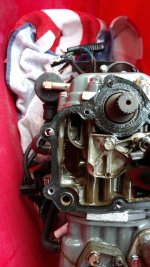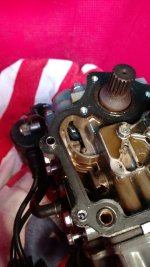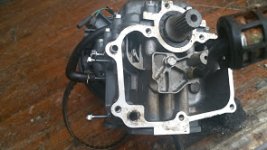I am new to forum. Just purchased older 1981, I think. Serial # is B100S 1302665. Dealer says model is a BF100B SA made in 1981. Motor has not been run in at least 10 years. Motor looks very good for age. Got it home and put motor in large bucket of water and it idled good, pees good, forward and reverse work fine. Gear oil when drained looked good - no water. Drained oil from motor and it was extremely milky, clearly water in oil. Hoping it was just condensation over the years of non-use, I refilled with oil ran motor 30 minutes and drained motor oil and again extremely milky. Refilled it again this time only running motor for 5 minutes and got the same results – extremely milky. Did compression test and both cylinders came back at 130 psi. Where should I start? Please help - Ordered Manual published by Honda from Amazon today.
Home
Outboard Motor Parts
Chrysler outboard parts Evinrude outboard parts Force outboard parts Honda outboard parts Johnson outboard parts Mariner outboard parts Mercury outboard parts Suzuki outboard parts Tohatsu outboard parts Yamaha outboard partsInboard & Sterndrive Engine Parts
Chrysler Marine inboard parts Crusader Marine parts MerCruiser sterndrive parts OMC sterndrive parts Pleasurecraft Marine parts Volvo Penta marine parts + MoreAll Engine Brands
All Manuals HomeOutboard Repair Manuals
Chrysler outboard manuals Evinrude outboard manuals Force outboard manuals Honda outboard manuals Johnson outboard manuals Mariner outboard manualsMercury outboard manuals Nissan outboard manuals Suzuki outboard manuals Tohatsu outboard manuals Yamaha outboard manuals
Inboard & Sterndrive Engine Manuals
MerCruiser sterndrive manuals OMC sterndrive manuals Volvo Penta marine engine manualsPlease Note
MarineEngine.com does not offer troubleshooting assistance or repair advice by email or by telephone.
You are invited to join our public Boat Repair Forum to seek assistance from other members.
You may also visit the Boat Motor Manuals section of our site to obtain a service manual.




